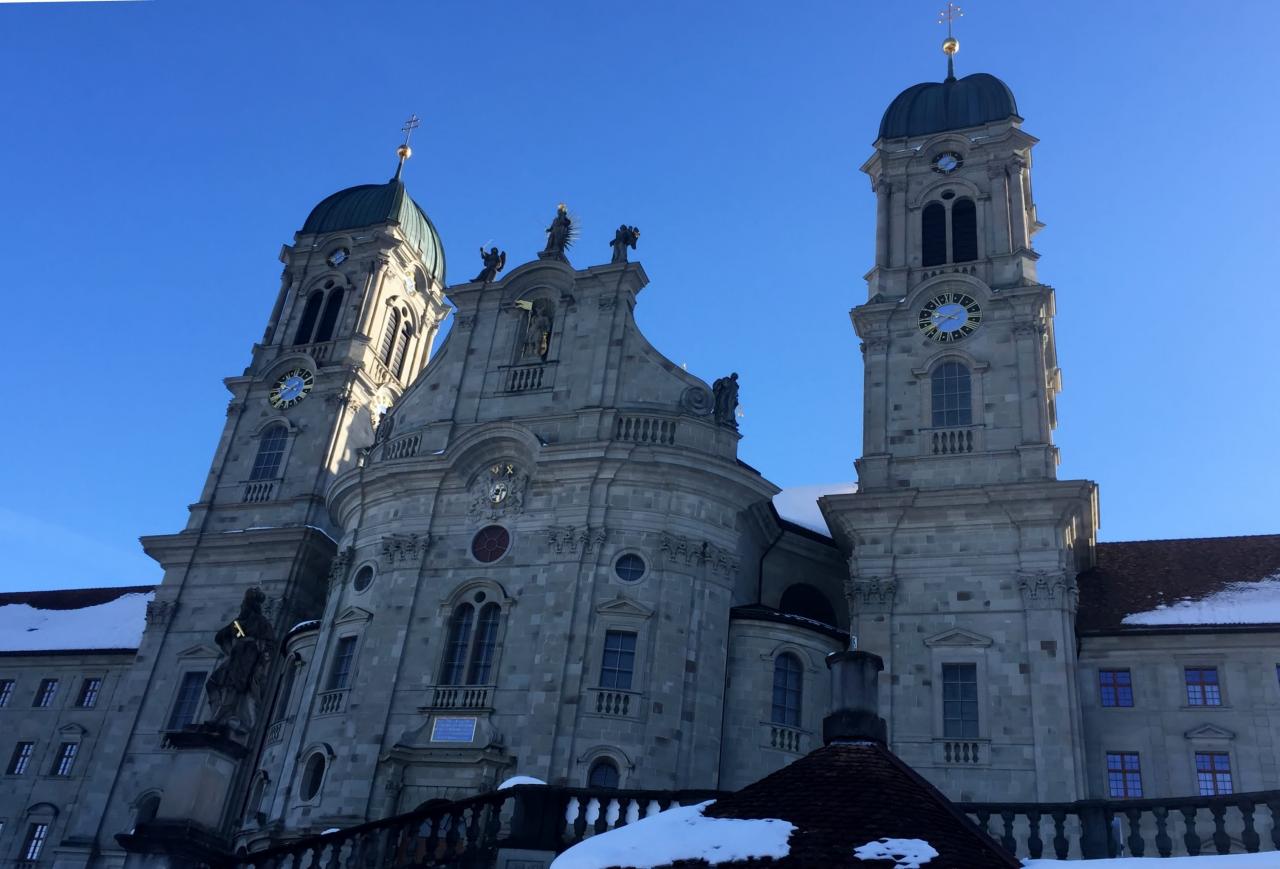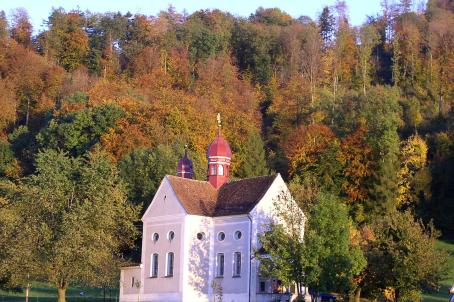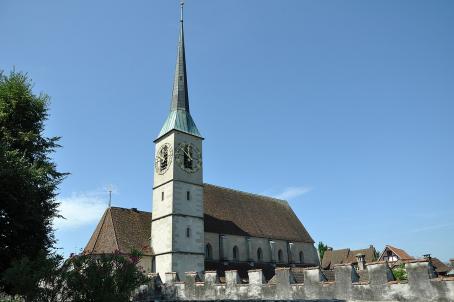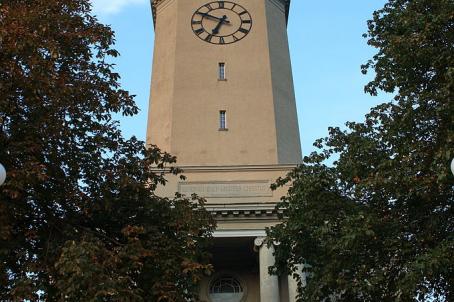Territorial Abbey of Einsiedeln

The territorial abbey of Einsiedeln is a Benedictine monastery founded in the 10th century, but the present Baroque monastery was built from 1674 to 1735 according to the plans of Caspar Moosbrugger. Since 1130, the monastery has been a double abbey where two communities live in two different places under one abbot: men in Einsiedeln, women in Fahr. The monastery is an important station of the pilgrimage to Santiago de Compostela and the destination of many pilgrims. The "Black Madonna" of Einsiedeln in the Gnadenkapelle attracts about one million pilgrims and tourists every year.





